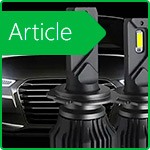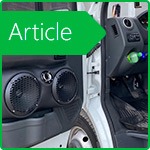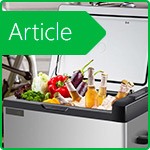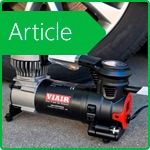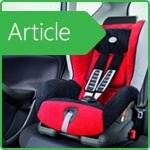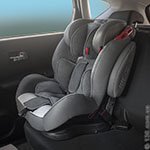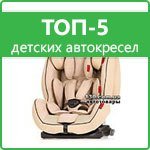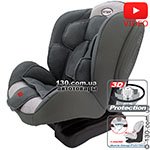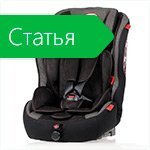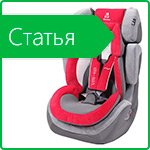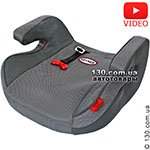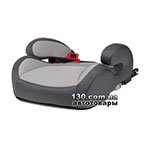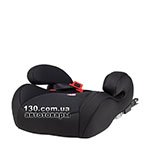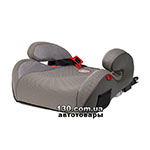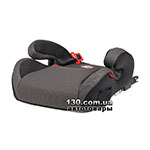Selection of child car seats: groups of car seats and General recommendations on them
A child safety seat, also known as a child safety seat or child restraint, but the most common name is a child car seat. It is installed on the stationary seat of the car, equipped with seat belts to securely hold babies and children.
As a rule, in countries that care about the safety of passengers, there is a law on the safe transportation of children. This law requires that the child be fastened in a secure restraining device depending on his weight and age. These rules are standard and require minimal effort. The main thing in time to transplant the child in a car seat corresponding to his age, and then, in case of an emergency, the child will be safe.
In 1990, the ISOFIX mount was invented and released[1], which, as expected, was to ensure maximum fixation of the child car seat in cars of different brands. However, not every car, even a new one, has the ability to install a car seat with ISOFIX system. The standard mount is considered to be a regular seat belt mount, the American version is a snap-on system, and the latest invention of ISOFIX can be used in group 0, 0+ and 1 car seats.
There are several types of car seats, depending on the age and weight of the child. According to the standard of Nations ECE R44/04[2] they are divided into 4 groups: 0-3. Many car seats are combined in large groups 1, 2 and 3.
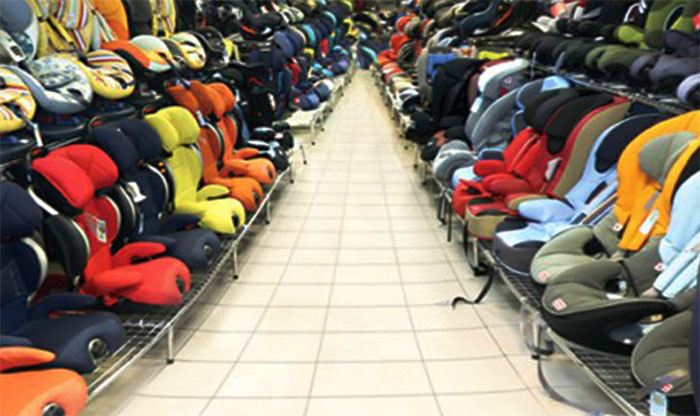
Content
1. Group 0 (from 2–3 kg to 10 kg)
1.1. Portable cradle
2. Group 0+ (from 0 to 13 kg)
2.1. Child seat-carrying
2.2. Adjustable acocella
3. Group 1 (from 9 kg to 18 kg)
4. Group 2 (from 15 kg to 25 kg)
5. Group 3 (from 22 kg to 36 kg)
6. Group 1/2/3, 2/3 and boosters (from 9 kg to 36 kg)
6.1. Group 1/2/3 (from 9 kg to 36 kg)
6.2. Group 2/3 (from 15 kg to 36 kg)
6.3. Booster (from 15 kg to 36 kg)
7. General information on child safety
8. The location of the seats in the car
9. Literature
Group 0
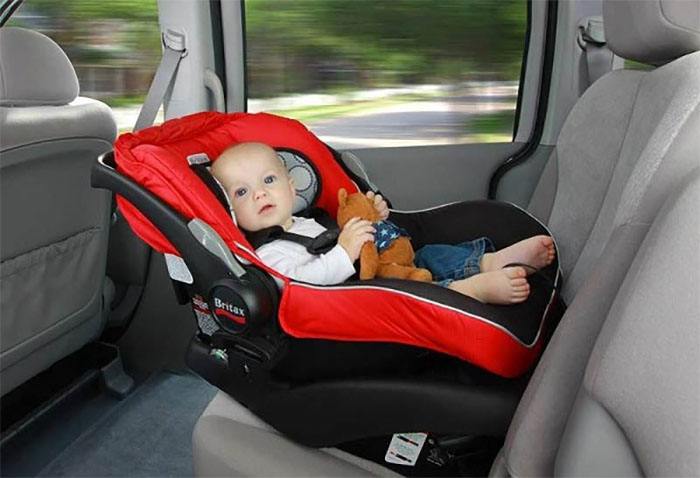
Baby portable cradle is a cradle, resembling in appearance a conventional bassinet from the stroller, but is designed specifically for transporting infants in a horizontal position. Usually has its own seat belt, which is attached to the tummy of the child. The cradle itself is installed on the back seat of the car with regular three-point safety belts perpendicular to the course of the car. Therefore, it has special guides for regular seat belts. Designed for weight from 2-3 kg to 10 kg.
Portable cradles group 0 allow the child to lie on his back. Some models of portable cradles have special adapters that allow you to install them on the chassis of the stroller. The practicality of such a cradle is that the child in it can sleep in a lying position, and there is no need to Wake him, just get the cradle out of the car with the child.
They are also recommended for premature babies who need only a lying position, not a reclining position. Cradles must be equipped with special handles-carrying. They can not be replaced by cradles from conventional strollers.
Group 0+
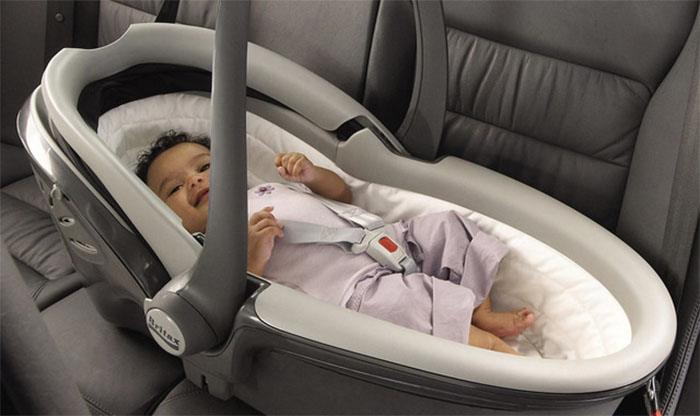
2.1. Child seat-carrying
Car seat group 0+ - carrying chair or cocoon chair for the youngest, designed for weight from 0 to 13 kg, that is, from a newborn to a one-year-old child, even a little more. Has a Cup-like shape.
What to look for when buying a car seat of this group: the shape of the car seat should be anatomically correct, otherwise the child risks getting a problem with the back and cervical vertebrae. How to define such form? It is enough to look at the car seat with a raised handle-carrying up, for easy carrying of the chair, and with the lowered, for installation in the car. And in the first and in the second case, the chair should have a practically reclining position, with a slightly raised up area of the headboard and legs. That is, it should be a kind of rocking chair, and the child should lie in it and, in any case, not to sit or sit. Only in this position the newborn baby will feel comfortable, and his posture will remain correct, and he can even sleep comfortably in this position.
It is well known that the newborn is not able to hold the head, so the car seat of this group must be equipped with soft additional inserts for the head with a special rim around it, helping to fix the head in the most natural position.
Seat belts must be five-point, it is this fixation helps to protect the child as much as possible. Also, the straps should have soft shoulder pads, otherwise there is a risk of damaging the delicate skin of the child even through clothes. In addition, the belts must be adjusted in height, have a reliable Central lock, which must also be closed with a soft pad.
The hood and additional Cape for legs will not be superfluous, since a small child has an imperfect thermoregulation, and the presence of a Cape will help to solve this problem. Sun hood will create a thick shadow and protect the eyes of the child from the unusually bright sun. All of the above requirements are met by baby car seats of the German company Heyner, which you can buy in our online store.
Sometimes some parents tend as early as possible to put the child in the course of the car, so that the child could feel more adult. However, Baby car seats group 0+ are set only against the movement of the car.[2] Only in this position in the event of a direct collision, the child's head will not make a dangerous "nod", leaving a link between the head and the torso of the spinal cord. It is well known that at such an early age, the muscles and ligaments of the neck are quite weak, and the bones are soft and fragile.
Therefore, the requirements of many countries and manufacturers of car seats, to install seats against the movement of cars for as long as physically possible.[3,4] the car Seats can only be installed in the front seat if there is no airbag or if it can be switched off. Otherwise, the seat is installed in the interior of the car in the rear seat.
2.2. Adjustable car seats
Adjustable car seats have their pros and cons. The advantages are that they can be used for a long time, while setting first against the movement of the car, then, as the child grows, in the course of movement. Well, in the end, it turns into a booster. Calculated on the weight from 3 kg to 36 kg.
Today there is a large selection of adjustable car seats, however they are not considered the best choice if you want to use it for newborns.
First, in such car seats very often the holes for shoulder straps are much higher than the shoulders of the child, even if they are installed on the lowest position. This means that the five-point seat belts will not perform their restraint functions as expected.
Secondly, adjustable car seats do not have a sufficient bowl-like shape in which the newborn would be in the most natural position, which means that the little child will not be comfortable enough in it. Despite the apparent savings in the purchase of only one car seat, pediatricians recommend still use several car seats of different groups, as your child grows.
Group 1
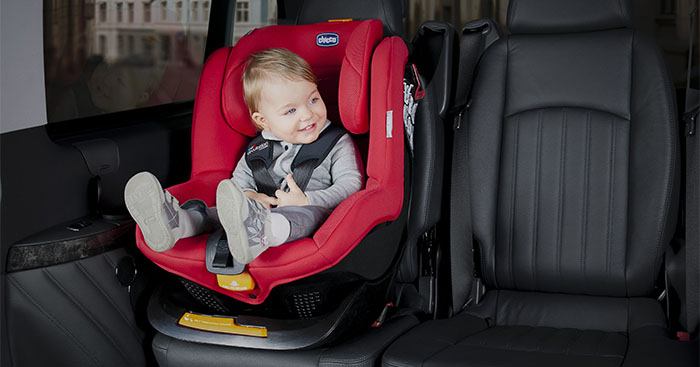
Car seat group 1 calculated on the weight from 9 kg to 18 kg This is approximately the age of 9 months and four years, although sometimes children and older can fit in this chair.
Car seats of this group must necessarily have five-point seat belts with soft shoulder pads, because, despite even the layer of clothing, baby skin is very soft, and hard straps can damage it. In addition, they prevent the belts from twisting. The belts must be adjustable in height, and the Central lock must be very reliable, so that the child could not accidentally unbutton himself.
There should also be additional side protection of the head and a special insert that securely and correctly fix the child's head in its natural position. Most manufacturers equip this group of car seats with additional inserts that help create protection in the spine and hips. Moreover, thanks to such soft inserts, the child will feel as comfortable as possible.
There are models of car seats that are installed on a special base, in the future the base can remain stationary in the car, and the chair can be removed. The base is also convenient because you can adjust the angle of the chair and adapt it to sleep and Wake. However, car seats with bases are much more expensive.
There are also models that do not have a base, but they have the ability to adjust the level of inclination of the backrest, such as the German car seat Heyner CapsulaProtect 3D, and thus the child in it, too, can stay awake or sleep. But, many models of car seats of group 1 do not have an adjustable backrest tilt.
Installed car seats regular seat belts against the movement of the car. It is recommended to transport children against the movement of cars as long as possible. In Scandinavian countries, for example, children are transported in this position up to four years.
Group 2
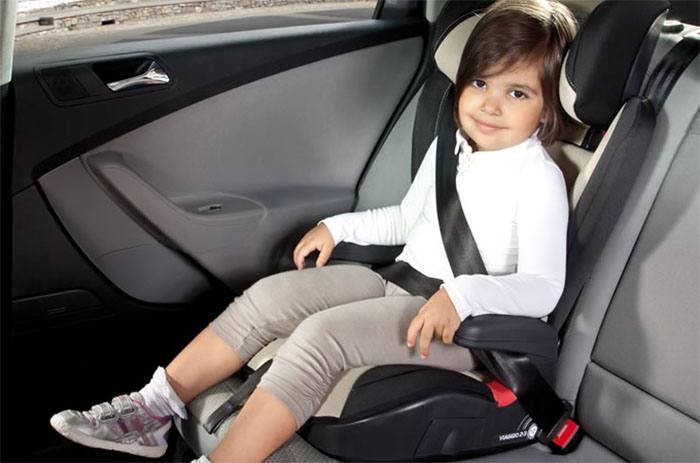
Group 2 car seats are designed for the weight of a child from 15 kg to 25 kg, from about four to six years.
In the car seat the child's head should be protected from side impacts, this requires enhanced lateral and internal protection. The height of the head restraint shall be adjustable. You should pay attention to the fact that the shape of the car seat was ergonomic, then the weak spine will be in the most comfortable position.
The presence of adjustable backrest tilt is a huge plus, as you can easily put the child to rest, or even sleep, just throwing back the car seat. Even if at first glance this function does not seem important, experience shows that children are much more comfortable with long trips in a chair with a slightly tilted back.
It should also be noted that there are models of car seats group 2, which can be easily converted into a group 3, and then booster, such as German car seats Heyner car seats. When buying such a chair, you will save money and time, and the child will be able to use a favorite car seat for a long time. Children's car seats of group 2 are fastened with regular seat belts during the movement of the car.
Group 3
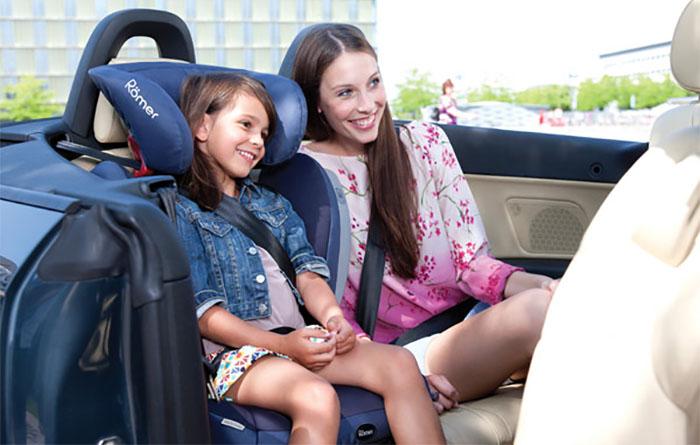
Group 3 car seats are designed for weight from 22 kg to 36 kg, approximate age from four to ten years. From this age, the child is held in the car seat by regular seat belts, therefore, it is not equipped with five-point belts.
However, in this group there are nuances to which you should pay attention. The height of the head restraint must be adjustable, and the head restraint must have a developed lateral protection and support of the energy-absorbing material that protects the child's head at side impacts and keeps it in the correct position during sharp maneuvers and turns.
Also, the shape of the headrest should be anatomically correct, however, as the shape of the car seat. Orthopedic properties of the chair form the correct posture and eliminate fatigue during travel. The presence of the backrest tilt adjustment will allow you to adapt the chair for rest or for wakefulness.
The seat of the car seat should be quite wide, which will allow a small passenger to feel comfortable, free and not constrained even in cold weather, when it is bulk clothing. For example, the car seats of the German company Heyner have a seat width of 35 cm, which makes them more comfortable and convenient.
High armrests to provide additional comfort and enhanced protection of the child. If a group 3 car seat is converted to a booster, then this is a constant plus as it will save you money and your child will be able to enjoy the ride as an adult passenger in the booster. Since the child is fixed by regular three-point safety belts, the adjustment of the belts should be done automatically when the height of the car seat back changes. The car seat of group 3 is installed on the back seat of the car with standard seat belts in the course of the car movement.
Car seat group 1/2/3, 2/3, and boosters
6.1. Группа 1/2/3
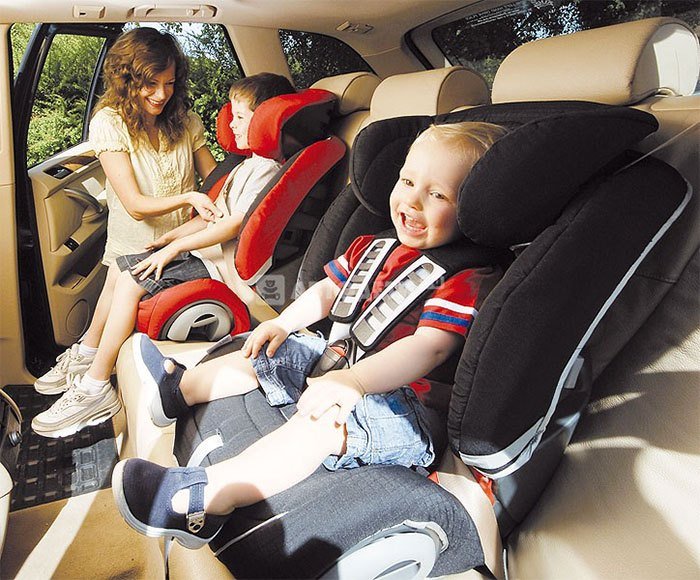
Group 1/2/3 car seats are designed to weigh from 9 kg to 36 kg, approximately 9 months to 12 years. They are equipped with five-point safety belts, which should fasten children weighing up to 15-18 kg. Starting from 18 kg, the child is fastened with regular three-point safety belts. These chairs are comfortable by those. that as the child grows, they grow with it. For example, Heyner MultiProtect-safety seat for children, which is designed in such a way that it is transformed into 3 age categories.
Some seats have tilt adjustment, but the tilt is not as pronounced as in group 0+ / 1. Therefore, on a long trip the child will be more comfortable in the chair of the 1st group. Almost all chairs of this group are attached by a regular seat belt.
Despite the stated 9 months, pediatricians and podiatrists recommend the use of such seats, not earlier than the year. First, up to a year in these chairs the child is not very comfortable, due to the fact that they do not have a sufficient inclination of the back, and they do not have the shape of a cocoon, and secondly, up to a year the child must travel against the car, and these chairs are not installed.
6.2. Group 2/3
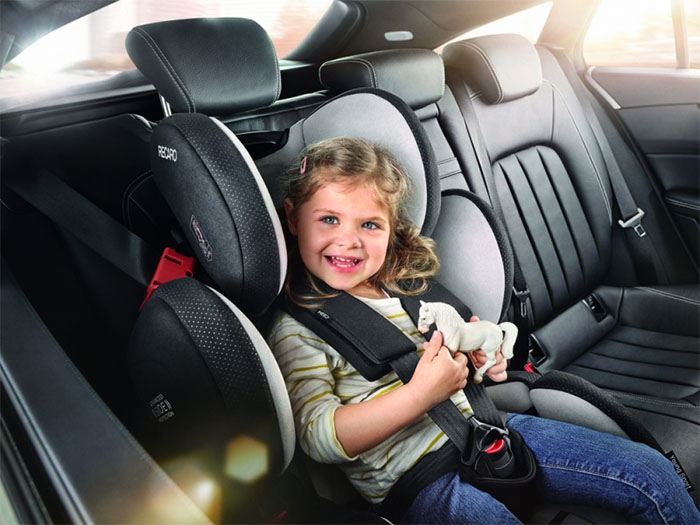
Car seats group 2/3 worth buying for children who have already reached the age of about three years and weigh 15 or more pounds.
Choosing a car seat and its correct use is the most important moment, where it is important not to make a mistake. On observations of experts 130.com.ua a lot of parents for children weighing more than 15 kg mistakenly bought car seats 1/2/3, because they do not know that their five-point belts are not designed to securely hold a child with this weight. The instructions of any child car seat 1/2/3 indicate that when transporting children of group 2 and 3 (15-36 kg) built — in point belts are not used-the child is fastened with a regular car seat belt. Therefore, if the child weighs more than 15 kg, it is necessary to buy a car seat group 2/3, for example, Heyner MaxiProtect, without overpaying for excessive at this age built-in seat belts.
6.3. Booster
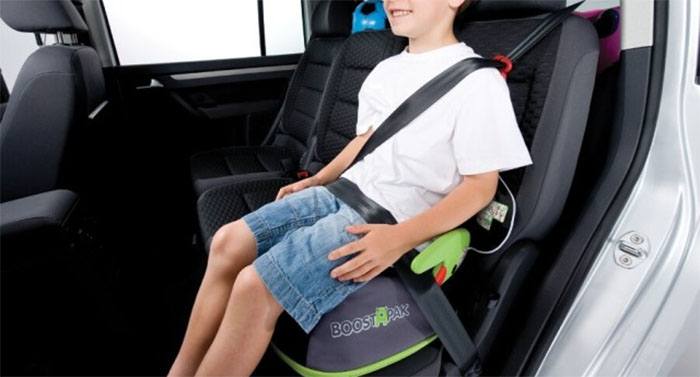
Booster or seat cushion is recommended for children who are no longer sitting in children's car seats, but not yet old enough that the standard three-point seat belts correctly and securely fixed them.
Since the seat belts are designed for adults, they are not suitable for children. Therefore, the booster will help to seat the child to the desired height, and then the seat belts will lie down, as it should be, while the child will be protected and securely fixed.
Belts must pass strictly through the collarbone and chest of the child, and be attached to the hips. If the belt is not to be in such a position, then he will be held in the neck and abdomen. This is very dangerous, because in case of an accident or a steep maneuver, there is a threat of internal organ damage, suffocation or even death.
General information on child safety
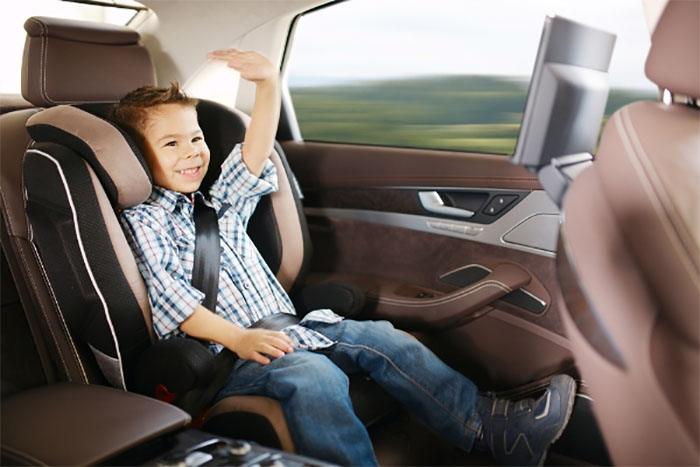
All child car seats must comply with the European safety standard ECE 44/04, have the appropriate marking and be tested in numerous crash tests.
Child restraints have an expiration date. On average, most car seats expire after 6 years from the date of manufacture, although this period may vary depending on the manufacturer. Always follow the manufacturer's instructions, because if the car seat does not protect your child in the required situation, the manufacturer will not be responsible if you do not follow its recommendations.
It is also forbidden to install child seats against the movement of the car on the front seats, if there are close airbags. If the airbag is opened, serious head injuries or even infant death may occur. Therefore, if the car does not have a special opportunity to turn off the airbag, the child car seat must be installed only in the rear seat.
Like motorcycle helmets, child restraints are only tested if they can endure one accident. This means that if a car seat has been involved in an accident with or without a child, owners are strongly advised to replace it, regardless of whether there is visible damage or not. This is due to the fact that even the slightest cracks in the body of the car seat, not visible to the human eye, can contribute to the coloring of the body in the next accident or even just a push. Buy baby car seat in Odessa, Kharkov and Kiev can be 130.com.ua with delivery in Ukraine.
If you fly a plane with your children, it should be remembered that the safest for your child is to travel in a car seat. Booster in the plane can not be used, since it does not have shoulder straps.[5]
Placing the car seat in the car
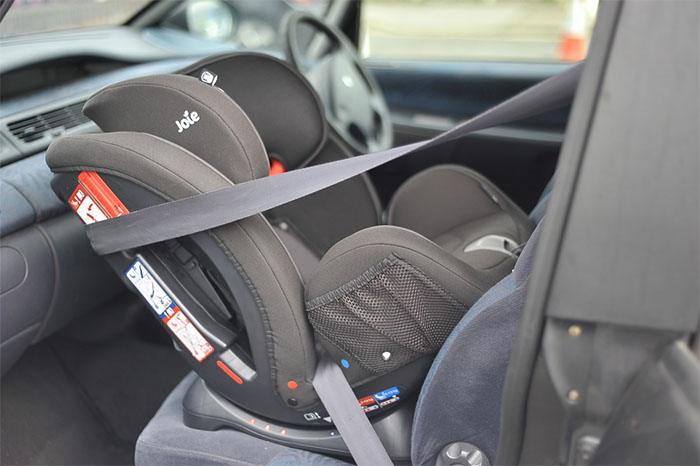
After studying the data, us scientists have found that if children's car seats were installed in the center in the back seat, then 43% less would be children under three years of injured in a car accident. The results were based on data from 4,790 car accidents involving children aged three and under between 1998 and 2006. In this regard, the Central position is considered to be the safest, but rarely used by parents.[6,7]
Literature
1. ^ The international standard ISO 13216. Mounts in vehicles and attachments to anchorages for child restraint devices. International organization for standardization, Geneva.
2. ^ Resolution No. 44 economic Commission for Europe of the United Nations (UN/ECE). Uniform provisions concerning the official approval of restraining devices for child passengers in motor vehicles ("child restraint").
3. ^ ab it is recommended to install child restraints against vehicle movement for at least four years.
4. ^ AAP UPDATED RECOMMENDATIONS ON CAR SEATS [1].
5. Kamrén ^ B, Коха М, Ли, Tingvall C, Larrson S, Turbell Т. Protective properties of car seats installed against the movement of the car. An overview of the opportunities and challenges of restraining devices for children aged 0 to 3 years. Symposium on the protection of the child passenger, San Antonio, November 1993. Society of automotive engineers (SAE), Inc Warredale, PA. SAE technical documentation, 933093.
6. ^ Tingvall С. Children in cars. Doctoral thesis. Some aspects of the safety of children in the car, preventing accidents on the roads. Acta Paediatrica Scandinavica. Supplement, 339:1-35,1987. (Doctoral thesis)
7. ^ child safety seats must be mounted centrally in the rear seat. Yahoo! News
Watch the video review of children's car seats
Related materials:
Baby car seats and boosters: Best Sellers

Stay tuned for updates!
Subscribe to our Telegram channel and be the first to receive useful materials.
Subscribe









